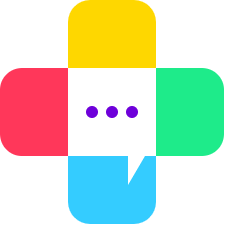In a world where healthcare and technology become one, imagine having real-time health data at your fingertips.
This future is already here, with the help of the Internet of Things (IoT) in healthcare. These devices are transforming how we monitor health, diagnose conditions, and create personalized treatment plans.

In this article, we’ll look into the benefits of incorporating IoT devices into our daily healthcare routines, exploring the diverse applications of these devices and their profound impact on patient care.
Table of Contents
1. IoT in Healthcare
2. Benefits of IoT Integration in Patient Care
3. Remote Monitoring and Real-Time Data Analysis
4. Enhancing Diagnostics with IoT Devices
5. Personalized Treatment Plans
6. Wearable Devices for Health Tracking
7. IoT in Elderly Care
8. AI-Powered Healthcare Apps
9. Security and Privacy Concerns
10. Trends and Advancements
11. FAQs
What is IoT in Healthcare?
IoT, short for the Internet of Things, refers to a network of interconnected devices and sensors used for collecting, transmitting, and analyzing health-related data in the healthcare sector.
These devices range from wearable fitness trackers to sophisticated medical equipment, all aimed at improving patient care.
Benefits of IoT Integration in Patient Care
Incorporating IoT devices in healthcare brings an array of advantages.
- Allows for continuous monitoring of vital signs
- Helps in the early detection of health issues
- Facilitates proactive interventions.
- Patients can experience enhanced care and reduced hospital visits through remote monitoring and timely alerts.
Remote Monitoring and Real-Time Data Analysis
IoT enables remote monitoring by utilizing devices that track patient vitals, sending data to healthcare providers in real-time.
The ability of IoT devices to provide real-time data analysis assists in swift decision-making.
This allows medical professionals to intervene promptly in case of abnormalities, reducing the risk of complications and hospital readmissions.
Enhancing Diagnostics with IoT Devices
IoT devices play a pivotal role in diagnostics by providing accurate and continuous data.
This data assists doctors in making more informed diagnoses, leading to more effective treatment plans.
Personalized Treatment Plans
IoT-generated data enables personalized treatment plans based on individual health metrics. This approach ensures that treatments are more targeted, improving patient outcomes.
Wearable Devices for Health Tracking
Wearable IoT devices like smartwatches and fitness trackers monitor various health parameters, promoting a proactive approach to personal health management.
They empower users to track their fitness, sleep patterns, and vital signs regularly.
IoT in Elderly Care
IoT devices play a significant role in elderly care by providing
- Remote monitoring
- Fall detection
- Medication reminders etc.,
This technology ensures the safety and well-being of the elderly population, allowing them to live independently for longer.
AI-Powered Healthcare Apps
AI-powered healthcare apps utilize IoT data to offer predictive analytics, personalized health advice, and assist in medical decision-making.
These apps contribute significantly to preventive care and early intervention strategies.
Security and Privacy Concerns
While IoT devices offer immense benefits, ensuring data security and patient privacy remains a crucial concern.
Robust security protocols and encryption are essential to protect sensitive health information from cyber threats.
Conclusion
The integration of IoT devices in healthcare is reshaping the industry, revolutionizing patient care through
- Real-time monitoring
- Enhanced diagnostics, and
- Personalized treatments.
As technology advances, the potential for AI-powered healthcare apps and IoT innovations to improve lives becomes even more profound.
FAQs
1. How does IoT contribute to reducing healthcare costs?
IoT technology in healthcare helps in cost reduction through various means.
- Remote patient monitoring prevents unnecessary hospital visits, reducing expenses for both patients and healthcare providers.
- Early detection and intervention facilitated by IoT devices can prevent the progression of diseases, potentially reducing treatment costs in the long run.
2. Are there specific regulations governing the use of IoT devices in healthcare?
Yes, several regulations, such as HIPAA (Health Insurance Portability and Accountability Act) in the United States and GDPR (General Data Protection Regulation) in the European Union, govern the use of IoT devices in healthcare.
These regulations ensure patient data privacy, security, and ethical use of IoT technologies.
3. Can IoT devices help in managing chronic diseases?
Absolutely. IoT devices play a crucial role in managing chronic diseases by continuously monitoring vital signs and health parameters.
This real-time data helps in disease management, allowing for timely interventions and adjustments in treatment plans, leading to better control and management of chronic conditions.
4. How secure is the data transmitted by IoT devices in healthcare?
IoT devices prioritize data security by implementing robust encryption methods and compliance with industry-standard security protocols.
However, as with any digital system, there’s always a potential risk. Healthcare providers and IoT manufacturers continuously work on improving security measures to safeguard patient data from cyber threats.



